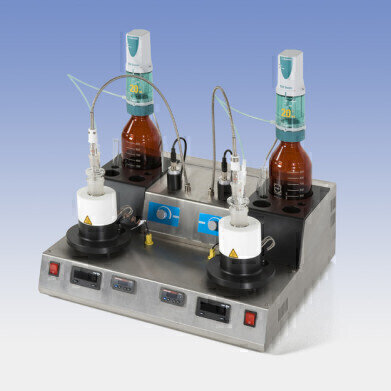Fuel analysis
Test methods for evaluating stability and compatibility of new IMO low sulphur marine fuels
May 19 2020
In October 2016 it was decided by IMO to introduce a global limit for sulphur in fuels used on board of ships. This so-called "Global Sulphur Cap" (capping the global fuel sulphur at 0.5%) has been enforced on 1 January of this year (2020). From this date the shipping industry has two options:
- 1. Switch to the new types of fuels with low sulphur content
- 2. Continue using HSFO (only allowed if ships are equipped with scrubbers)
This new situation has introduced a big challenge to the shipping industry and its fuel supply chain. The fuel suppliers will need to deliver a fuel which meets the parameters agreed between the supplier and user of the fuel. The fuel users will have the responsibility that the fuel will be handled correctly and safely on board, causing no engine failures when fuels are switched (even fuels which fully meets the statutory reguirements (ISO 8217) will require treatment on board of ships).
Important parameters of marine fuels are the stability, compatibility and stability reserve.
- 1. Stability of a residual fuel (asphaltene stability) is the resistance of a petroleum liquid to form insoluble material from the fuel itself, while handled and stored under normal conditions. Stable fuels will have a high resistance and unstable fies will give poor performance due to the formation of asphaltenic desposits.
- 2. Compatibility is the ability of two or more fuels to be blended without any risk of material separation, no precipitation of asphaltenes. Fuels may be compatible at some mixing ratios, incompatible at other mixing ratios or incompatible/compatible over the entire mixing ratio
- 3. Stability reserve of a fuel is used for blending purpose, hence compatibility of two fuels. It is and indication of the capacity of a fuel to absorb another fuel without causing precipitation of the asphaltenes.
Test methods for evaluation the stability and compatibility of a fuel are the Total Sediment Test (IP375/ISO10307/D4870) wich is a filtration test and the so-called spot test (D4740). Zematra is a producer and supplier of both methods. Zematra has developed an improved version of the Total Sediment Test available in a 2, 4 and 6 position version. The Zematra modified ASTM D4740 is a portable test kit which can be used on board of ships, we also supply a lab version and since 2018 there is an automated version available through Zematra produced by AD Systems.
A method for predicting the stability reserve which can be used for blending purposes (determine compatibility ratio) is the ASTM D7060. Zematra is the producer and supplier of the instrument for this method. The Automated Stability Analyser (ASA), calculates the Po and Frmax numbers, which can be used for blending calculations (correct mixing ratio of fuels). Four blends of the fuel are prepared, fuel is mixed with 1-methylnaphtalene (aromatic solvent) in 4 different ratios. These blends are then titrated with hexadecane (non-aromatic solvent). After completion the software calculates the Po, Frmax and P-ratio (P-value). These values can be used for blending calculations with another fuel (mixing ratio).
For more information send us an email.
Digital Edition
PIN 26.1 Feb/Mar 2025
March 2025
Analytical Instrumentation - Elemental Analysis for Quality and Process Control at Refineries, for Lubricants and Wear Metals in Engine Oils - Synthetic Lubricants: New Developments - Scaling...
View all digital editions
Events
Apr 08 2025 Birmingham, UK
Apr 08 2025 Kielce, Poland
Apr 08 2025 Ravenna, Italy
Apr 08 2025 Southampton, UK
Apr 08 2025 London, UK
























